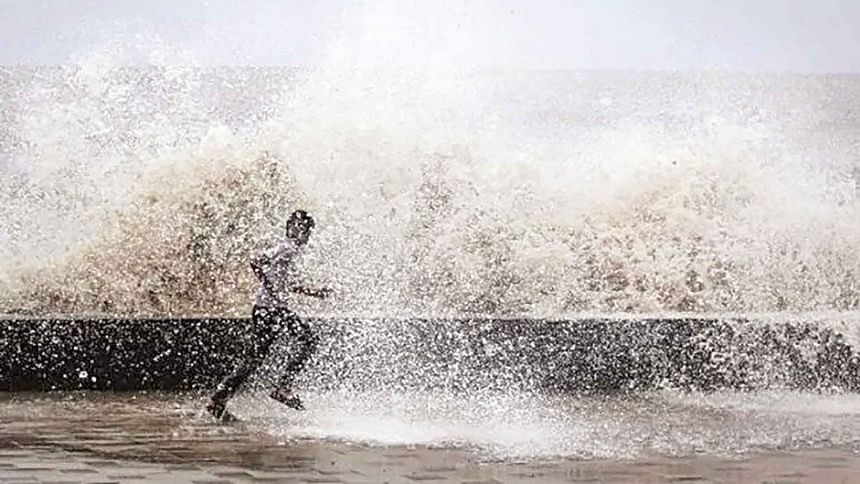Harnessing marine renewable energy in Bangladesh

Because of their continuous renewability and inexhaustibility, ocean energies are known as marine renewable energy (MRE). However, all ocean-based renewable energy resources are not considered MRE. For example, the production of biofuels from marine biomass is generally regarded as a form of bioenergy instead. Likewise, offshore wind is considered a particular application for wind energy technology. MRE resources are those that use the kinetic, potential, chemical or thermal properties of seawater. Ocean waves, tidal currents, tidal range, ocean currents, ocean temperature and salinity gradients are all examples of this. These renewable resources can be harnessed using various energy conversion technologies into a useful form, typically electricity.
The conversion of MRE resources into electricity could play an important role in the use of renewable energy, while meeting growing energy demand and bolstering economic activity. It also contributes to offsetting emissions from conventional greenhouse gas (GHG)-intensive electricity generation. Therefore, it has been recognised by the Intergovernmental Panel on Climate Change as a means of mitigating climate change. A special report commissioned by the High-Level Panel for a Sustainable Ocean Economy (Ocean Panel) on "The Ocean as a Solution to Climate Change: Five Opportunities for Action", published in 2019, estimated that ocean-based climate solutions could reduce global GHG emissions by nearly four billion tons of carbon dioxide equivalent (CO2e) per annum in 2030. Additionally, ocean-based renewable energy has the potential to support a wide range of socioeconomic benefits, including new opportunities for economic activity, job creation and local value creation, and position itself as the main source to power the blue economy.
According to the International Renewable Energy Agency's (IRENA) report "Fostering a blue economy: Offshore renewable energy," published in 2020, the theoretical resource potential for electricity production from all marine renewable technologies combined ranges from 45,000 terawatt-hours (TWh) to well over 130,000 TWh per year, while global electricity demand in 2019 was 25,814 TWh. Despite huge potential, the worldwide cumulative installed capacity of all marine renewable energy in 2020 was 535 megawatts (MW). Several challenges stemming from technology, infrastructure, finance, policy, market and environment may be accounted for this low uptake.
According to a recent study based on cost data provided by developers, the existing levelised costs of energy (LCOE) for tidal and wave energy are estimated to be between USD 0.20/kilowatt-hour (kWh) and USD 0.45/kWh, and between USD 0.30/kWh and 0.55/kWh respectively. Harsh marine environment and relatively low maturity of most of the technologies with poor grid connection infrastructure and supply chain result in high LCOE. Technology costs typically fall as deployment increases, as well as other factors such as supply chain sophistication and investor confidence. Looking at the learning curve of other renewable energy sources—for instance, between 2010 and 2019, offshore wind costs fell 29 percent to USD 0.115/kWh and solar photovoltaic fell 82 percent to USD .068/kWh, as reported in IRENA's 2020 publication "Renewable Power Generation Costs in 2019"—it is clear that significant cost reduction occurred in the past. In the same way, greater capacity deployment and accelerated learning are projected to lower the costs of MRE.
Marine renewable energy resources are vast, but they aren't evenly distributed. Waves tend to be greatest at higher latitudes, whilst ocean thermal energy is principally distributed in the tropics. Salinity gradient and tidal range are more patchily distributed. In any case, some form of marine renewable energy is available at every coast and often more than one form could supply local power needs. Currently, over 30 countries around the world are pursuing MRE. The European Commission set a goal of producing at least one gigawatt (GW) of wave and tidal energy by 2030 and 40 GW by 2050.
Bangladesh has the Bay of Bengal to its south, with about 710km of coastline extending from St Martin's in the south-east to the Sundarbans in the south-west. Many small islands are scattered along the Bay of Bengal and the word "Char" is used in many of the names. The long coastline and many small islands have the continuous presence of strong tides and waves coming from the Bay of Bengal. However, the ability to tap energy is contingent on technological readiness. Of all MRE technology, tidal technologies have the highest level of readiness and are nearest to commercialisation. Tidal power can be generated using two technologies—tidal stream and tidal barrage. Tidal stream power plants are now preferred because of their lower environmental footprint. Wave energy comes next to tidal in terms of technological readiness.
Tidal and wave energy technologies could be competitive in niche markets such as remote islands, which depend on relatively costly fossil fuel imports. Following a resource mapping exercise, suitable wave and tidal positions among these islands must be established, which has yet to take place in Bangladesh. A number of countries including Canada, Chile, the UK, and the United States have mapped their marine renewable energy resources on a national scale. These countries can assist developing countries with access to the sea in determining their marine renewable energy resources to expedite global energy transition.
Harnessing inexhaustible indigenous sources as much as possible is key to ensuring energy security in the context of regional and global political economy. In Bangladesh, terrestrial renewable energy is limited by land available for capacity expansion, while fulfilling the targets of the Sustainable Development Goals and the Nationally Determined Contributions under the Paris Agreement requires substantial increase of renewable energy. Marine renewable energy should thus be one of the important elements, not only for driving the blue economy for Bangladesh but also for the transition to a clean energy future. An initiative to map marine renewable resources and launch a pilot project could pave the way for a new renewable energy frontier to emerge.
Mohammad Alauddin is Chairman of the Sustainable and Renewable Energy Development Authority.

 For all latest news, follow The Daily Star's Google News channel.
For all latest news, follow The Daily Star's Google News channel. 



Comments